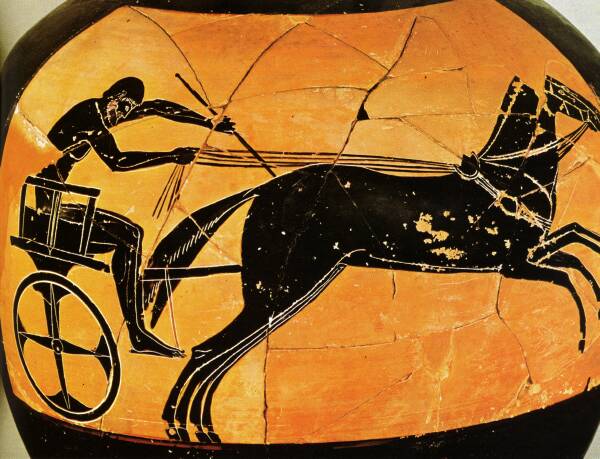

The Colosseum is the most famous gladiatorial arena, a magnificent building that still stands today. Criminals, army deserters, prisoners of war and political or religious undesirables were crucified, tortured, beheaded, maimed and tortured for the entertainment of the crowd. Executions were part of a day at the circus – fitted in before the main event of the gladiator show. Emperor Augustus (ruled 27 BC – 14 AD) is thought to have been the first to publicly loose wild beasts on the condemned. They threw spiked pieces of metal at their opponents and occasionally rioted. There were four coloured factiones or racing teams: blue, green, red and white, who invested in drivers, chariots and social clubs for their fans, which were to grow into something like political street gangs.
#ANCIENT CHARIOT RACES DRIVERS#
Drivers were paid, one reportedly making the equivalent of $15 billion in a 24-year career, and bets laid.īy the fourth century AD there were 66 racing days a year, each of 24 races. It became a technically complex and lucrative business. This wasn’t the certain death or injury of gladiator fighting, but chariot racing was often fatal. The Circus Maximus racing venue is said to be as old as Rome, and when Caesar rebuilt it around 50 BC it could hold 250,000 people. Romulus is supposed to have held races that acted as a distraction for the kidnapping of the Sabine women in Rome’s first war in 753 BC. Races were held in ludi and as part of other religious festivals, accompanied by great parades and entertainments. Listen Now Chariot racingĬhariot races are probably as old as Rome itself. Trajan celebrated his victories in Dacia with 123 days of games involving 10,000 gladiators.Įmlyn Dodd discusses Pompeii and wine production there. Only 120 gladiators could be used at each munes, only 25,000 denarii (about $500,000) could be spent. These laws were often broken. Caesar staged games in 65 BC with 320 pairs of fighters as these contests became as publicly important as the old ludi. Laws were passed as early as 65 BC to limit an arms race in spending. The first emperor, Augustus, took all games into state control and imposed limits on their number and extravagance. Powerful men started to invest in gladiators and gladiator schools. The first official “barbarian combats” were held in 105 BC. These combats also became a way of showing that Romans were better than their barbarian foes. Fighters were dressed and armed as tribes the Romans had fought, like the Thracians and Samnites. Private shows became ever-growing public spectacles, staged to celebrate military victories and as a way for Emperors, generals and powerful men to win popularity.

The fact that some fights were specially advertised as “without mercy” suggests that not all were death matches. Livy, the great historian of early Rome, says the first public gladiator fights were held in 264 BC during the first Punic War with Carthage, still branded as funeral rites. Like the ludi, they were to gain a wider public role. Archaeological evidence favours the Campanians. The Campanians and Etruscans first held combats as funeral rites, and the Romans did the same at first, calling them a munes. Two rival Italian peoples, the Etruscans and the Campanians are possible originators of these bloody celebrations. Like so many apparent Roman innovations, gladiator combats were a borrowed entertainment. Tristan Hughes travels to Vindolanda Roman Fort to see what discoveries have been made in 2021. Caesar’s heir Octavian held his own ludi in response. One of Caesar’s killers in 44 BC, Marcus Brutus, sponsored games to help win the people over to what he had done. As public, elected officials got involved they became a tool to win popularity, growing in size and magnificence. By the Imperial era, from 27 BC, there were 135 days allotted to ludi. The number of days on which they appeared each year soon began to grow. Ludi were games held as part of religious festivals and included horse and chariot racing, mock animal hunts, music and plays. Roman games did not originally include the gladiator combats with which they are so associated now. Chariot racing was the most popular, many games were a great spectacles of killing, with gladiators fighting to the death and horrific public executions of criminals, prisoners of war and persecuted minorities like Christians. Roman games included great sporting battles. Rome was a great civilisation, but lots of its customs are far from civilised by our standards.


 0 kommentar(er)
0 kommentar(er)
